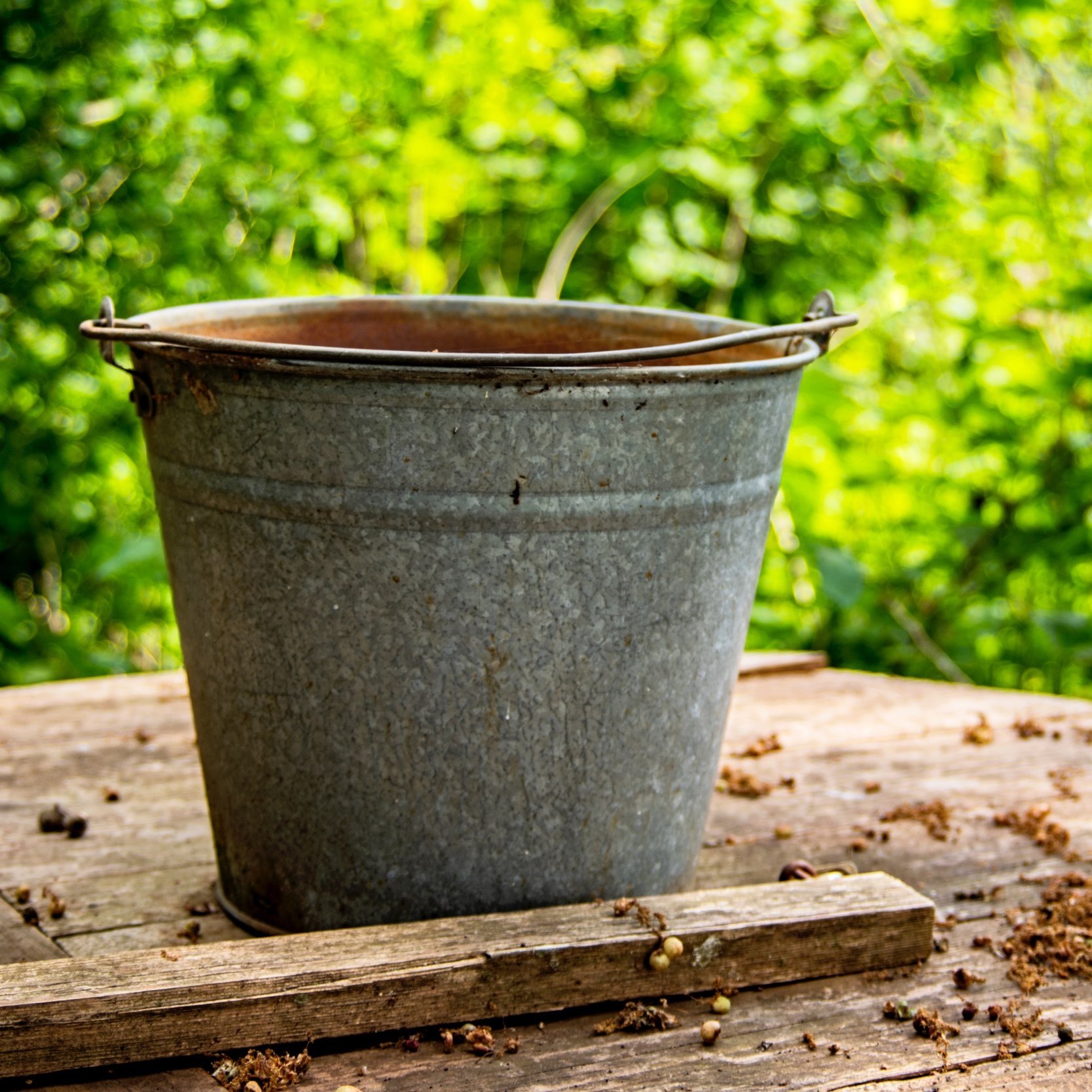Beauty of a bucket
This post originally appeared in Dr. Rachel A. Larimore’s weekly Samara newsletter on March 8, 2022. If you’re interested in receiving these emails, scroll to the bottom of this page to subscribe.
I’ve had many conversations lately about buckets. I have a feeling this isn’t typical. But buckets are beautiful things—especially to a nature-based early childhood educator!
Why so much love for buckets? They’re an invaluable loose part! Whether in the outside natural play area or in spaces beyond the fence, buckets are overflowing with possibility (metaphorically & sometimes literally).
I’ve seen children use buckets for…
…hauling soil from one hole to another, packing sand or snow in order to build structures, sitting on, trapping imaginary creatures hiding in the woods, pouring water to make puddles, tossing objects into, and SO. MUCH. MORE.
Ideally children have access to many buckets in a variety of shapes (square, round), sizes (1 gallon, 5 gallon), and even materials (plastic, metal). The greater number and variety of buckets, the richer the play.
You may be thinking…“I don’t have the budget for buckets!”
Well, there’s no need to purchase plastic buckets. My recommendation is to reach out to local restaurants, bakeries, delicatessens, coffeeshops, etc. Most all these places purchase cooking supplies that are delivered in plastic buckets - and in many cases these buckets end up in the recycling bin or the garbage.
Another place to check is your local recycling facility. Sometimes they will separate out the buckets for a second life.
The beauty about food grade buckets is you know they’re safe for reuse after a quick wash. (Plus, you’re modeling a sustainable practice by reusing buckets rather than buying new!)
My challenge to you this week is to count your buckets, identify the sizes and shapes you have, and add some variety to your collection. Your children will thank you! They may also start asking for additional tools like shovels, pulleys, and water, but that’s a discussion for another time :)
Keep changing lives,
Rachel
Rachel A. Larimore, Ph.D., Chief Visionary of Samara Learning


